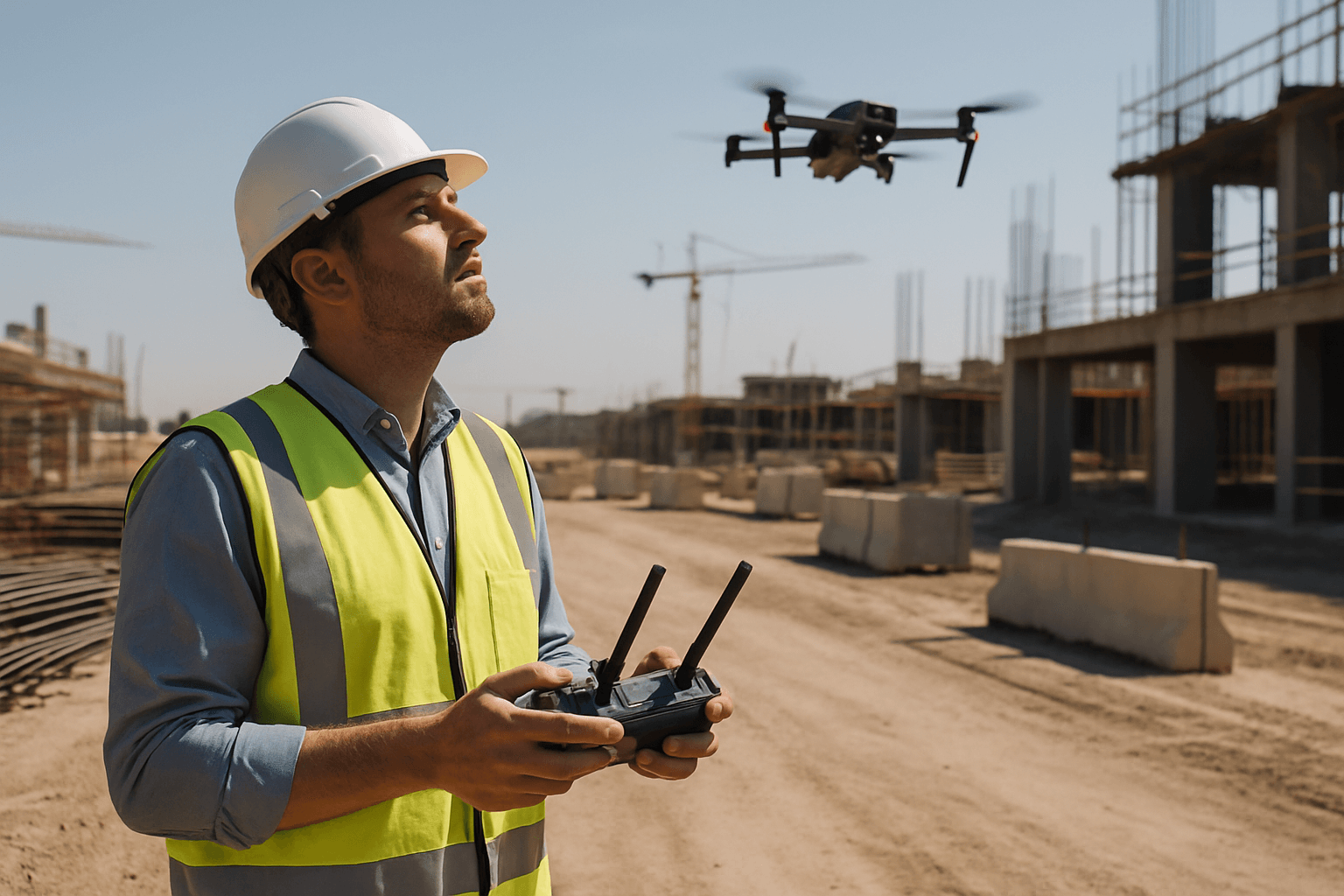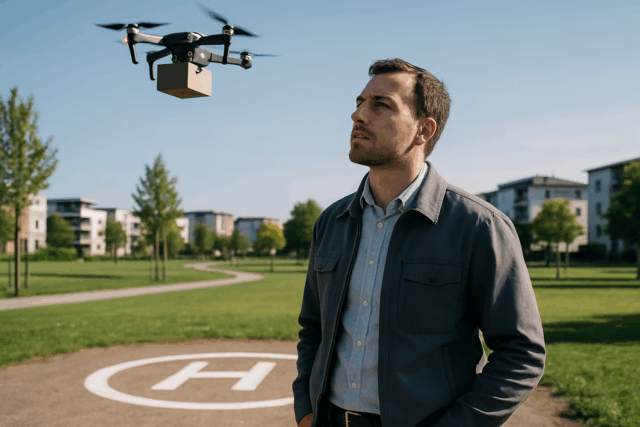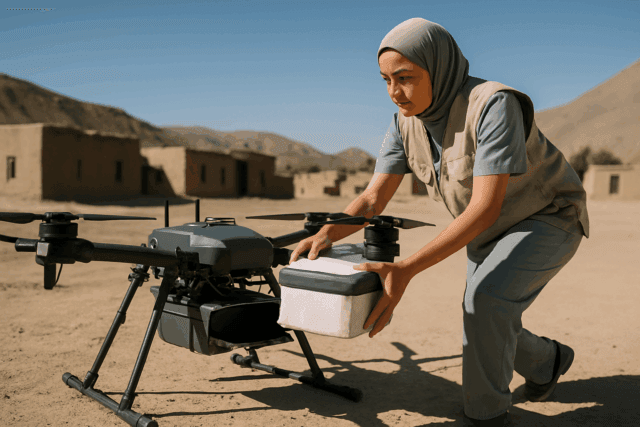Drones have transitioned from a niche technology to a mainstream tool across diverse industries. From agriculture and construction to surveillance and delivery services, businesses are increasingly recognizing the potential of drones to enhance efficiency, reduce costs, and improve overall operations. However, understanding and maximizing the return on investment (ROI) of drone programs is crucial for making informed decisions and achieving tangible financial benefits.
Understanding Drone ROI
Return on Investment (ROI) measures the profitability or value gained from using drones compared to the initial and ongoing costs. It helps organizations evaluate whether investing in drone technology is financially worthwhile. A drone ROI calculator analyzes costs, operational savings, and revenue generation to provide a percentage-based ROI, aiding in the evaluation of financial benefits.
The ROI of a drone program will be directly linked to the specific industry and application. The most compelling reason to implement a drone program has always been the amount of time that could be saved using a UAV. Time equals money, so any time saved is a tangible return on investment.
Key Benefits of Drone Integration
Integrating drones into business operations offers a multitude of benefits, including:
- Lowering Costs: Drones can significantly reduce costs across various industries by automating tasks, reducing labor needs, and minimizing the need for expensive equipment.
- Improved Safety: Drones can perform inspections and surveys in hazardous environments, reducing risks to human personnel and minimizing potential accidents.
- Better Data Collection: Drones equipped with advanced sensors and cameras can collect high-resolution data more quickly and accurately than traditional methods, enabling better decision-making and resource allocation.
- Greater Speed/Efficiency: Drones can complete tasks in a fraction of the time compared to traditional methods, leading to significant time savings and increased productivity.
Calculating Drone ROI
Calculating the ROI of a drone program involves several steps:
Determine the Initial Investment: This includes the cost of the drone itself, accessories, software, training, and any necessary certifications or licenses.
Estimate Annual Costs: This includes maintenance, insurance, battery replacements, software subscriptions, and personnel time.
Identify Gains: This involves quantifying the cost savings, revenue generation, and other benefits resulting from drone operations. Gains can come from various sources, such as:
- Reduced labor costs
- Increased efficiency
- Improved safety
- Better data collection
- Higher crop yields
- Reduced material waste
Apply the ROI Equation: To find your ROI percentage, divide the net gains by the costs and then multiply the result by 100.
ROI = ((Net Gains) / (Costs)) x 100
For example, if the gains from drone operations are £50,000 and the costs are £20,000, the ROI would be:
- ((£50,000 – £20,000) / £20,000) x 100 = 150%*
Factors Influencing Drone ROI
Several factors can influence the ROI of a drone program:
- Purchase and Setup Costs: High-end drones for industrial applications cost more but can deliver significant ROI due to their advanced capabilities and features.
- Labor and Time Savings: Drones can replace costly tasks like manual inspections, land surveys, and crop analysis, leading to significant labor and time savings.
- Revenue Generation: Drones can directly generate income through services like photography, mapping, deliveries, and inspections.
- Operational Efficiency: Faster data collection and improved accuracy lead to better decision-making and optimized resource allocation.
- Maintenance and Downtime: Proper care and maintenance ensure long-term ROI by avoiding costly breakdowns and downtime.
- Regulatory Compliance: Compliance with local regulations and obtaining necessary permits are crucial for avoiding fines and project delays.
- Data Processing and Analysis: Efficient data handling and analysis are essential for turning raw data into actionable insights and maximizing ROI.
Drone Applications and ROI by Industry
Drones are being utilized across a wide range of industries, each with its unique applications and ROI considerations.
Agriculture
Agricultural drones have emerged as a new norm that offers the automation, technology and power farmers need to stay competitive. The agriculture sector reported that the main use of drones was in boosting productivity. The time, labour and cost savings provided by UAVs is substantial.
Benefits:
- Increased Crop Yield: Optimised drone spraying and regular crop health monitoring directly impact yield.
- Time Savings: Automated drone missions for crop monitoring, spraying, fertilizing, and surveying require minimal operator input, saving substantial time and labor.
- Materials Savings: Drone systems deliver pesticides, herbicides, insecticides, fertilisers and seeds with incredible accuracy, reducing waste and costs.
- Reduced Need for Manual Labor and Equipment: Drones reduce the need for manual labor, tractors, and other equipment, further reducing costs.
- Improved Safety: Drones improve safety for personnel by reducing the need for manual labor in hazardous environments.
ROI Considerations:
- Spraying Drones: Investment in a spraying drone and flying certification comes in at around $40,000-$50,000.
- Service Providers: The cost of a drone platform can be recouped in just 4 to 6 weeks of continuous use during peak season. Newer spraying drones can cover as much as 40 acres per hour.
Example:
- A farmer with 185 acres of beets could lose significant revenue due to issues like nutrient deficiencies or pest infestations. Drones can help detect these issues early, preventing substantial losses.
Construction
Drones are reshaping how construction projects are managed by providing high-resolution imagery, 3D mapping, and progress tracking.
Benefits:
- Reduced Inspection Times: Drones can reduce inspection times by up to 60%.
- Labor Cost Savings: Drones can lead to labor cost savings of 20–30%.
- Improved Project ROI: Overall project ROI improvements can range from 15–25%.
- Early Issue Detection: Drone-generated 3D models enable early detection of structural issues, preventing costly delays.
- Better Logistics Planning: High-resolution maps enable better logistics planning, reducing material delivery times and shortening project timelines.
ROI Considerations:
- The initial purchase cost of high-quality drones, particularly those equipped with RTK (Real-Time Kinematic) for enhanced accuracy, is worth the consideration.
Example:
- A construction firm saved $1.7 million by using drone surveying instead of traditional methods, cutting training costs, reducing the need for heavy infrastructure, and minimizing the risk of project delays.
- A major commercial developer used construction drones to monitor the renovation of a 20-story office building. By deploying drones, the inspection time was reduced by over 60%, and labor costs were slashed by nearly 30%. The drone-generated 3D models enabled early detection of structural issues, preventing costly delays and contributing to a 25% overall improvement in project ROI.
Infrastructure Inspection
Drones offer a safer, faster, and more cost-effective way to inspect critical infrastructure like bridges, power lines, and wind turbines.
Benefits:
- Enhanced Safety: Drones eliminate the need for personnel to access hazardous or hard-to-reach areas, reducing the risk of accidents and associated costs.
- Reduced Inspection Times: Drones can complete inspections in a fraction of the time compared to traditional methods.
- Cost Savings: Drones reduce the need for expensive equipment like scaffolding and manned aircraft, leading to significant cost savings.
ROI Considerations:
- The size of the construction site will primarily affect the choice. Smaller sites may require less sophisticated drones, whereas larger areas benefit from drones with longer flight times and higher data capacities.
Example:
- Utilities use drones for routine inspections of critical infrastructure, such as power lines and wind turbines. This approach not only cuts down response times compared to scheduled manned surveys but also reduces the risks and logistical complexities associated with traditional methods.
Delivery Services
Drones are revolutionizing the delivery landscape by offering unparalleled speed, safety, and cost-effectiveness.
Benefits:
- Reduced Labor and Fuel Costs: Drones can significantly reduce labor and fuel costs compared to traditional delivery methods.
- Faster Delivery Times: Drones can deliver packages more quickly, especially in urban areas and remote locations.
- Access to Inaccessible Areas: Drones can access areas that are difficult or impossible to reach by traditional vehicles.
ROI Considerations:
- High-end drones for industrial applications cost more but can deliver significant ROI.
Example:
- A ship supply business cuts travel times from half-an-hour to six minutes – and saves on costs associated with manning and fuelling delivery boats by using Drones.
- A volunteer rescue team using FlyCart 30 for faster medical supply delivery to the frontline: Trials show it now takes less than five minutes, instead of two hours.
Mapping and Surveying
Drones equipped with high-resolution cameras and LiDAR sensors are transforming the mapping and surveying industry.
Benefits:
- Reduced Project Time: Drones can complete mapping and surveying projects in a fraction of the time compared to traditional methods.
- Increased Data Accuracy: Drones can collect high-resolution data with greater accuracy than traditional methods.
- Cost Savings: Drones reduce the need for field crews and expensive equipment, leading to significant cost savings.
ROI Considerations:
- A drone system priced at $4,000, along with drone mapping software to process the data at $5,000, provides an ROI within 2-3 projects.
Example:
- A firm contracted to provide 1-foot contours on a 10-acre site. Traditional methods would take a field crew of 3-4 employees 3-4 days to complete, costing the firm $3,000-$4,000. A drone system priced at $4,000, along with drone mapping software to process the data at $5,000, provides an ROI within 2-3 projects.
Challenges in Measuring Drone ROI
Despite the clear benefits of drone technology, measuring the precise ROI can be challenging. Some of the common challenges include:
- Quantifying Intangible Benefits: Some of the benefits of drone programs, such as improved safety and better decision-making, can be difficult to quantify in monetary terms.
- Tracking All Costs: It can be challenging to track all the costs associated with a drone program, especially indirect costs like training, maintenance, and regulatory compliance.
- Data Overload: Drones can generate massive amounts of data, making it difficult to extract valuable insights and measure the impact on business outcomes.
- Evolving Technology: The rapid pace of technological change in the drone industry can make it difficult to assess the long-term ROI of drone investments.
Maximizing Drone ROI
To maximize the ROI of drone services, businesses must take a strategic approach:
- Identify Specific Needs: Determine the specific business needs and challenges that drones can address.
- Choose the Right Drone: Select drones and payloads that are best suited for the specific use case.
- Invest in Training: Ensure that your team is well-trained in operating drones, processing data, and complying with regulations.
- Optimize Workflows: Integrate drone data seamlessly into your project workflows to achieve the highest return on investment.
- Monitor and Analyze Data: Continuously monitor and analyze drone data to identify trends, optimize operations, and measure ROI.
- Comply with Regulations: Ensure compliance with all applicable regulations and obtain necessary permits.
Future Trends in Drone Technology
The drone industry is constantly evolving, with several key trends shaping the future of UAVs:
- AI-Powered Analytics and Cloud Computing: The integration of AI-powered analytics and cloud computing is expected to redefine the future of UAV industry by enabling real-time, on-demand data processing.
- 5G Connectivity: With implementation of 5G networks worldwide the use of UAV also termed as High Altitude Pseudo Satellites as a mobile 5G station for communication is being tested in remote areas.
- Mid-Air Refueling: Mid-Air refueling of drones is an emerging capability aimed to boost the operational range and endurance of UAVs.
- Swarm Drones: Swarm drones are revolutionizing industries by enabling autonomous, large-scale operations, offering increased efficiency in tasks like surveillance, agriculture, and search and rescue.
- Hybrid UAVs: Hybrid UAVs, combine fuel-based propulsion with electric offering high operational efficiency and endurance. Their ability to support longer missions are set to propel the adoption of UAVs in logistics and surveillance.
Conclusion
Drones offer immense potential for businesses seeking to improve their operations and maximize ROI. The economics of drone spraying have reached an inflection point in 2025. While the technology still represents a significant investment, the combination of operational savings, yield improvements, government incentives, and environmental benefits has shifted the financial calculus decidedly in favor of adoption for many farm operations. By carefully managing drone operations, investing in training, and optimizing workflows, businesses can harness the power of drone technology to drive growth and success.





